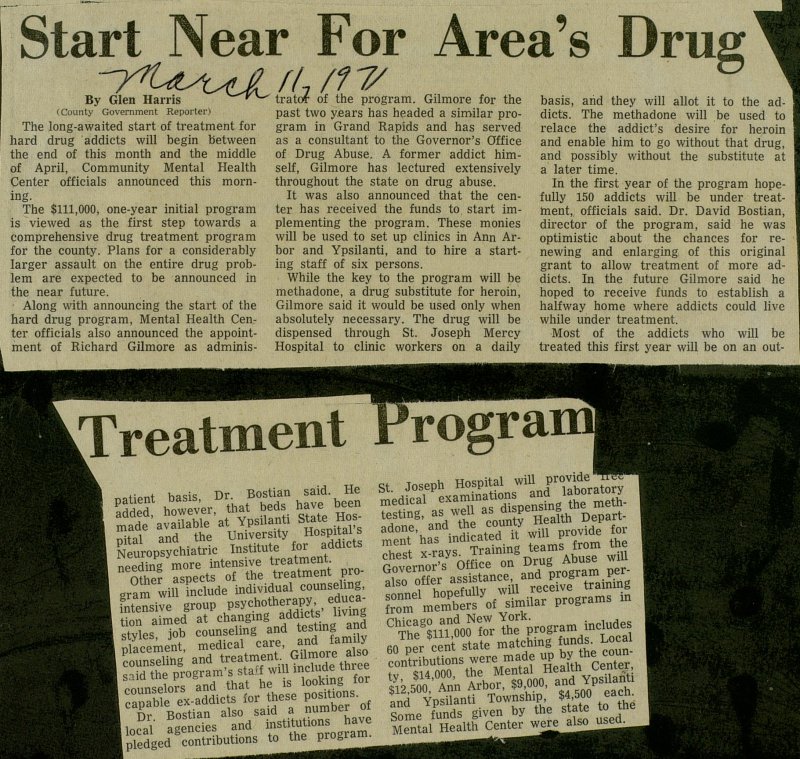Start Near For Area's Drug Treatment Program

The long-awaited start of treatment for hard drug addicts will begin between the end of this month and the middle of April, Community Mental Health Center officials announced this morning. The $111,000, one-year initial program is viewed as the first step towards a comprehensive drug treatment program for the county. Plans for a considerably larger assault on the entire drug problem are expected to be announced in the near future. Along with announcing the start of the hard drug program, Mental Health Center officials also announced the appointment of Richard Gilmore as trator of the program. Gilmore for the past two y.ears has headed a similar program in Grand Rapids and has served as a consultant to the Governor's Office of Drug Abuse. A former addict himself, Gilmore has lectured extensively throughout the state on drug abuse. It was also announced that the center has received the funds to start implementing the program. These monies will be used to set up clinics in Ann Arbor and Ypsilanti, and to hire a starting staf f of six persons. While the key to the program will be methadone, a drug substitute for heroin, Gilmore said it would be used only when absolutely necessary. The drug will be dispensed through St. Joseph Mercy Hospital to clinic workers on a daily 1 basis, and they will allot it to the addicts. The methadone will be used to relace the addict's desire for heroin and enable him to go without that drug, and possibly without the substitute at a later time. In the first year of the program hopefully 150 addicts will be under treatment, officials said. Dr. David Bostian, director of the program, said he was optimistic about the chances for renewing and enlarging of this original grant to allow treatment of more addicts. In the future Gilmore said he hoped to receive funds to establish a halfway home where addicts could live while under treatment. Most of the addicts who will be treated this first year will be on an NeuropsKMattic Instilóte tor .dd.cts ram wiü include individual counseling, ntensive group P.yer , edug tinn aimed at changing addicts nving stvles lob counseling and testing and cement, medical care, and fam ly mmm LcaV LencTes and institutions have Ipledged contributions to the program. f II CSg$mSooNforTher program includes Ptll Mental Health Centerjverealsouse